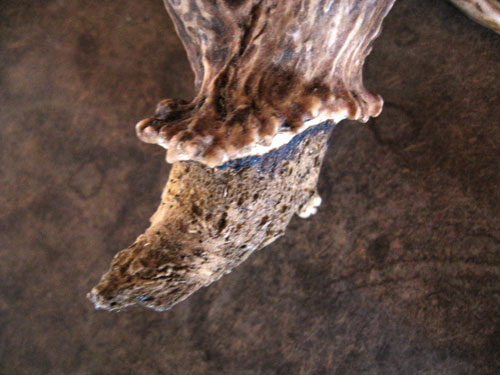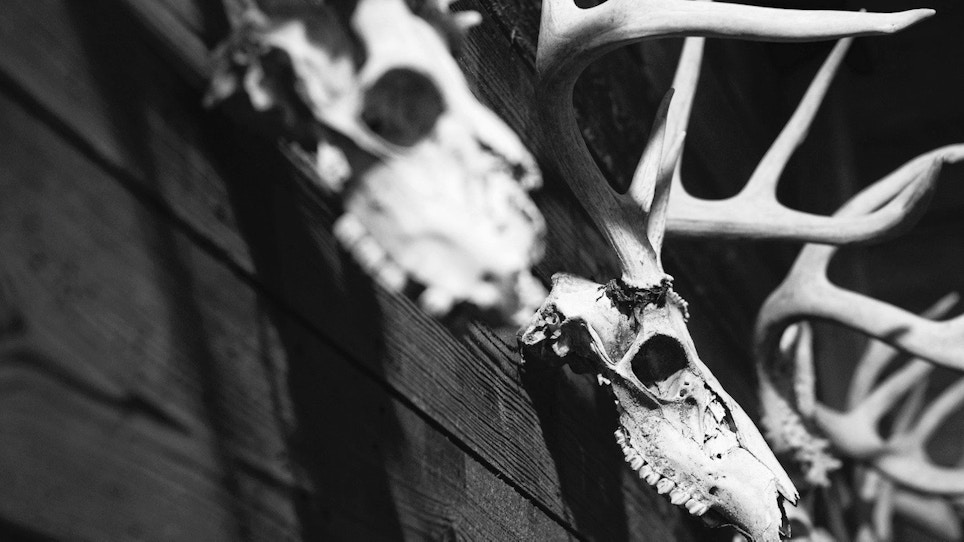When the rut is on, bucks will fight. While most “fights” are just pushing and shoving matches often involving young bucks that don’t even know they are bucks yet, others are aggressive encounters. Older, mature bucks — those that do three quarters of the mating — do throw down. And sometimes those fights can be downright nasty.
Still, it’s pretty unusual for bucks to actually kill each other.
However, a study by Gabrial Karns, a graduate student from North Carolina State University, and Dr. Mark Conners, manager and wildlife biologist at Chesapeake Farms on the eastern shore of Maryland, shows some fights do lead to a slow death.
What a "fight to the death" might look like (Hint: It's very slow)
There is a bacterial disease called intracranial abscessation (basically a bad infection) that affects the brain, deteriorates the skull and leads to the death of some older bucks. How many? Some national statistics suggest that 10 percent of all natural, deer mortalities that occur (including predation, diseases, winter deaths and automobiles, but not hunting) is caused by this bacterial disease.
Karns and Conners found those numbers to be quite a bit higher on Chesapeake Farms.
Dr. Conners noticed that antler shedding occurred rather irregularly on the farm. Some older bucks shed early, others late. Among the antlers Conners collected were some carrying a foul odor, suggesting an infection. The wildlife biologist also noticed an irregularity at the base of some sheds which turned out to be a portion of the deer's skull. The portion, the pedicle, is the boney protrusion on the skull's frontal bone where the antler is attached.
This was puzzling. Normally, when a deer sheds its antlers, its caused by a separation from the pedicle. This, along with the observed foul odor, suggested something more. And one other thing: most of the dead, older bucks the researchers examined had pus oozing out at the base of the antlers or around the eye socket. During a five-year period, 26 bucks were autopsied and, of those, nine (35 percent) had abscesses around the brain.
Is there cause-and-effect between bacterial infections and fight wounds?

Antler shed with a portion of the deer's skull attached. The portion, the pedicle, is the boney protrusion on the skull's frontal bone.
This led to several questions
- How does the bacteria get into the brain cavity?
- How common is this bacteria in the wild?
- Do all bucks that get the infection die from it?
- Why is it more common in older bucks?
- How many older bucks get this disease and die?
Lots of questions. Few fact-based answers. Many educated theories.
Dr. Conners and Gabrial Karns sampled tree rubs for the bacteria, but found none. They believe, however, that the bacteria enters the skin via abrasions sustained either when the antlers are in velvet or during a fight. In other words, the bacteria enters through a serious injury made to the base of the antler area when the antlers are in velvet. The bacterial entry could occur during a serious rut fight of older bucks or through a simple skin abrasion. Once inside the skin, it appears to erode the skull along bone sutures before entering the brain. It is here that the real damage begins.
The bacteria begins to abscess, leading to infection around the brain before causing the skull — along the bone sutures — to become porous. This infection and deterioration of the skull near the base of the antler would explain why the antler detaches and sheds with part of the skull attached.
The question then becomes did the deer have a broken antler that later became infected or did the infection occur first, making the antler susceptible to breakage? It might be both, and the research to answer such questions is ongoing.
Are these bucks taking preventative measures?
One way to avoid the possible cause-and-effect relationship between this fatal bacterial infection and buck fights is to adopt a new fighting style. Don't lead with your antlers.
Earlier this summer, the Tennessee Wildlife Resources Agency captured two bucks slapping each other in what appeared to be a fight. (Granted, it's a pretty girly-looking fight). The footage was taken near a trail in Hardeman County, Tennessee.
Amy Snider, the Hardeman county wildlife officer, caught the exchange on a trail camera.
White-tailed deer can live up to 12 years, but they rarely reach anything over seven years of age, according to TWRA.
— Amy Hatfield
Featured Photo: John Hafner






